---
title: Connecting with the Neon-Managed Integration
subtitle: Link an existing Neon project to Vercel and keep billing in Neon
redirectFrom:
- /docs/guides/vercel-previews-integration
enableTableOfContents: true
updatedOn: '2025-11-11T17:38:12.163Z'
---
The purpose of the Neon-Managed Integration
How to install it from Connectable Accounts
How automated Preview Branching works
How to manage environment variables and branch cleanup
Vercel-Managed Integration
Manual Connections
---
## About this integration
The **Neon-Managed Integration** links your existing Neon project to a Vercel project while keeping billing in Neon. Instead of sharing a single database across all preview deployments, this integration creates an isolated database branch for each preview deployment.
**Key features:**
- One-click connection from Vercel Marketplace
- Automatic database branches for each preview deployment
- Environment variable injection (`DATABASE_URL`, `DATABASE_URL_UNPOOLED`, `PG*` variables)
- Automatic cleanup when branches are deleted
Choose the Neon-Managed Integration if you already have a Neon account/project or prefer to manage billing directly with Neon.
---
## Prerequisites
Before you begin, ensure you have:
- A Neon account with at least one project and database role
- A Vercel account with a project linked to GitHub, GitLab, or Bitbucket
---
## Installation steps
## Connect from Neon Console
In the [Neon Console](https://console.neon.tech), navigate to **Integrations** and click **Add** under Vercel.
Click **Install from Vercel Marketplace** to open the integration in Vercel.
## Add the integration in Vercel
On the Vercel page, click **Install**.
This opens the **Install Neon** modal where you can choose between two options. Select **Link Existing Neon Account**, then click **Continue**.
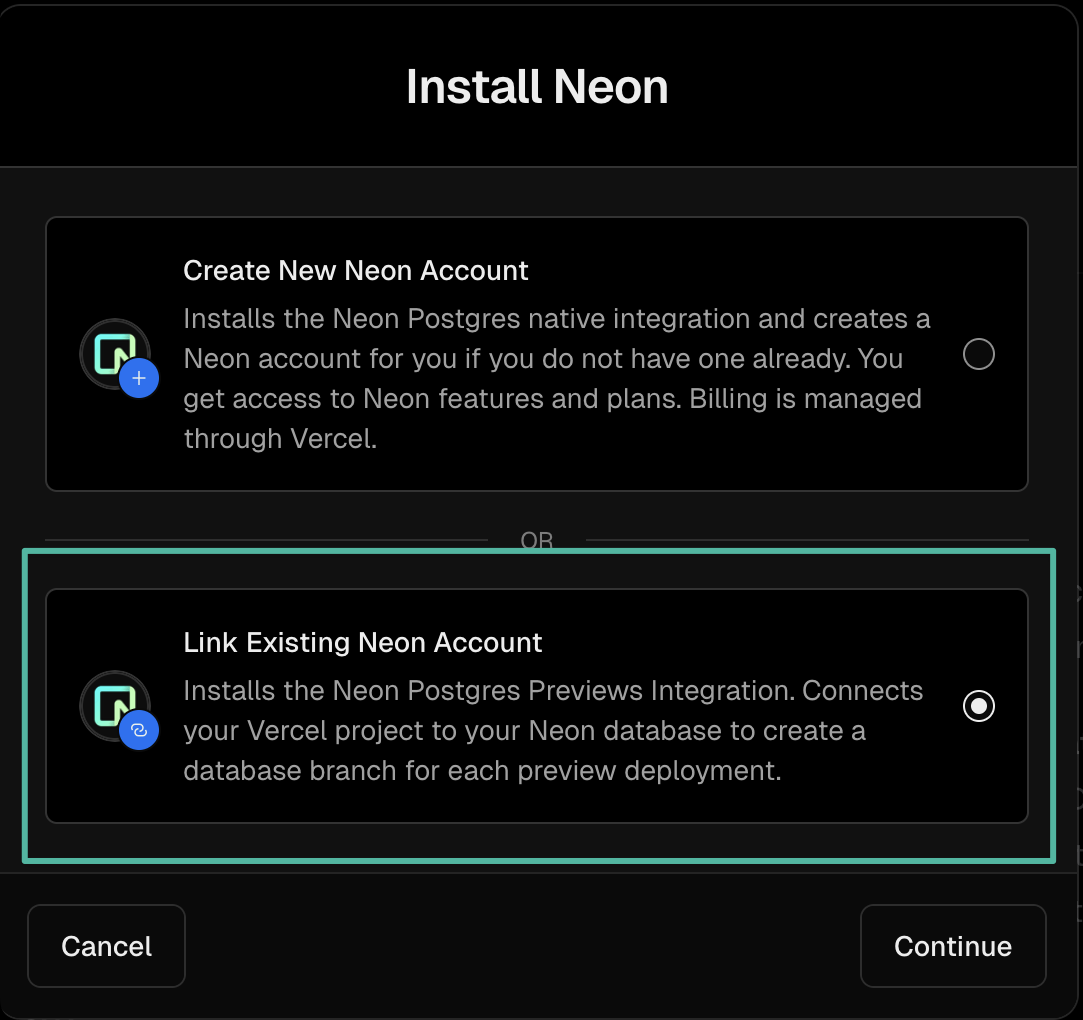
Alternatively, if you're accessing this directly from the Vercel Marketplace, locate the **Connectable Accounts** section, find **Neon**, and click **Add**. This differs from the **Native Integrations** section in the Vercel Marketplace.

## Configure the connection
Choose which Vercel account and projects can use this integration. Each Neon project connects to exactly one Vercel project. Selecting **All projects** makes the integration available to other Vercel projects.

## Set up project integration
In the **Integrate Neon** dialog:
1. **Select your Vercel project**

2. **Choose your Neon project, database, and role**

3. **Configure optional settings:**
- Enable **Create a branch for your development environment** to create a persistent `vercel-dev` branch
and set Vercel development environment variables for it. The `vercel-dev` branch is a clone of your project's default branch (`main`) that you can modify without affecting data on your default branch.
- Enable **Automatically delete obsolete Neon branches** (recommended) to clean up branches when git branches are deleted.
4. Click **Connect**, then **Done**
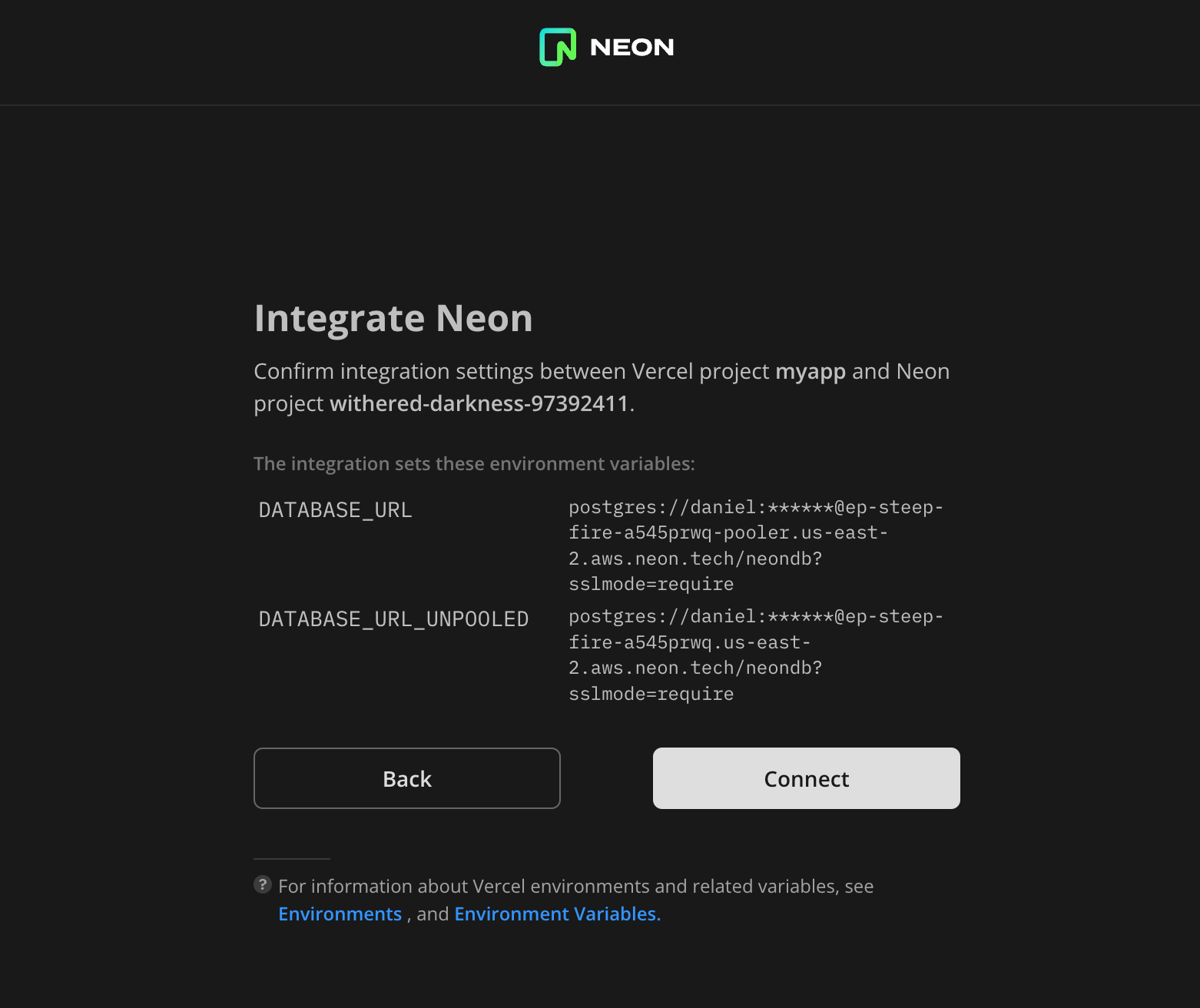
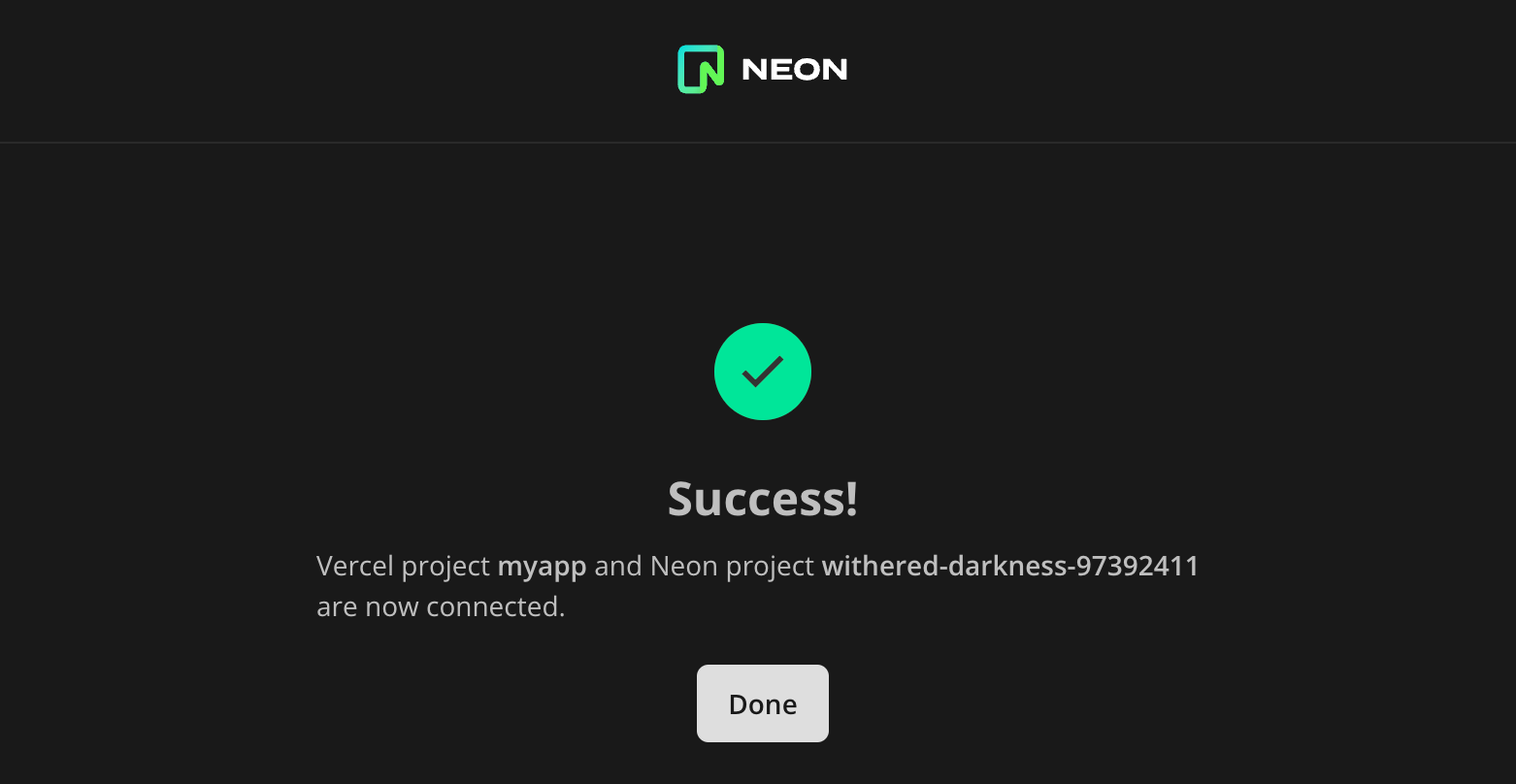
### What happens after installation
Once connected successfully, you'll see:
**In Neon Console:**
- A `vercel-dev` branch (if enabled) under **Branches**
- Future preview branches will appear here automatically
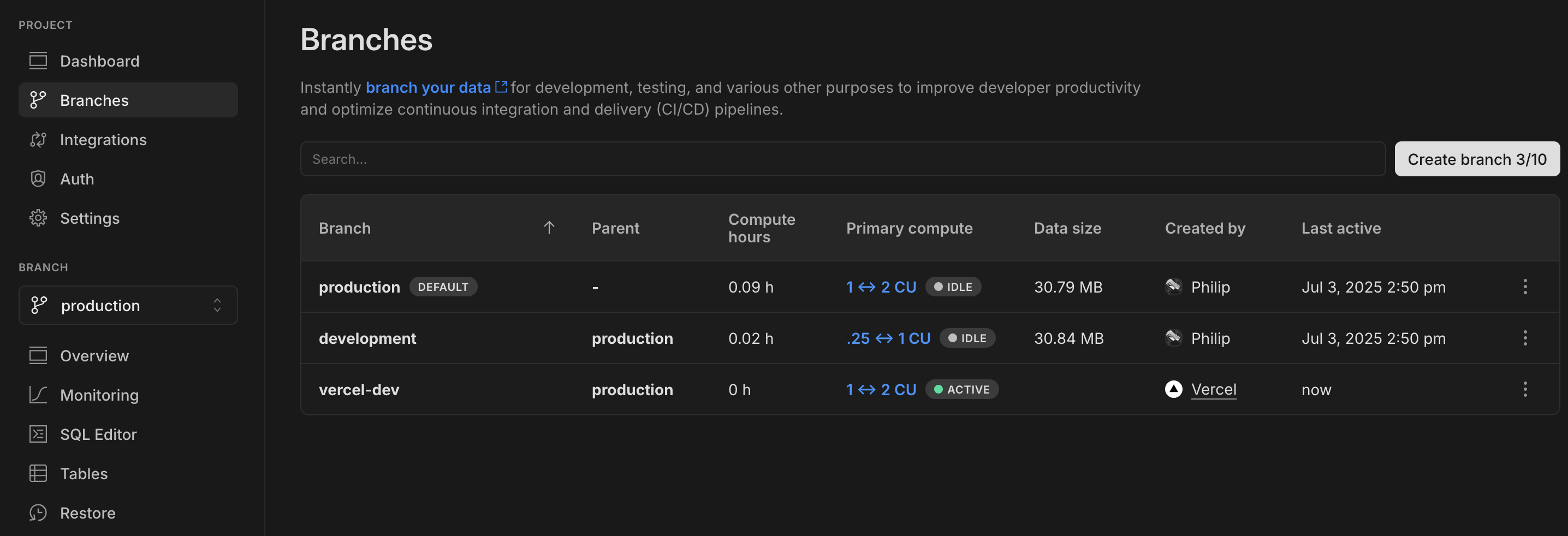
**In Vercel:**
- `DATABASE_URL` and other environment variables under **Settings → Environment Variables**
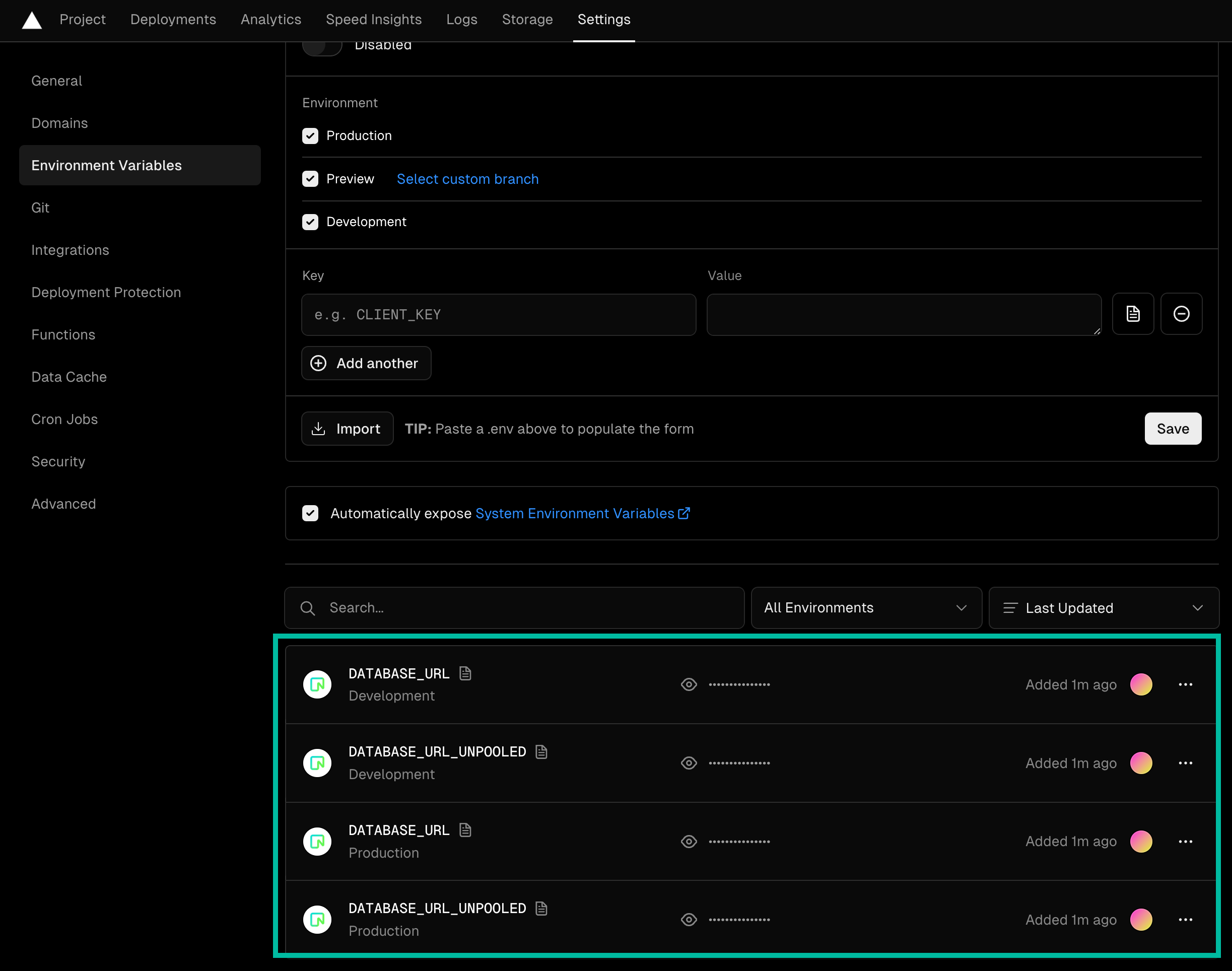
---
## How Preview Branching works
The integration automatically creates isolated database environments for each preview deployment:
## Developer pushes to feature branch
When you push commits to a feature branch, Vercel triggers a preview deployment.
## Integration creates Neon branch
The integration receives a webhook from Vercel and creates a new Neon branch named `preview/` using the Neon API.
## Environment variables injected
Vercel receives the new connection string and injects it as environment variables for that specific deployment only.
This isolation allows you to test data and schema changes safely in each pull request. To apply schema changes automatically, add migration commands to your Vercel build configuration:
1. Go to **Vercel Dashboard → Settings → Build and Deployment Settings**
2. Enable **Override** and add your build commands, including migrations, for example:
```bash
npx prisma migrate deploy && npm run build
```
This ensures schema changes in your commits are applied to each preview deployment's database branch.
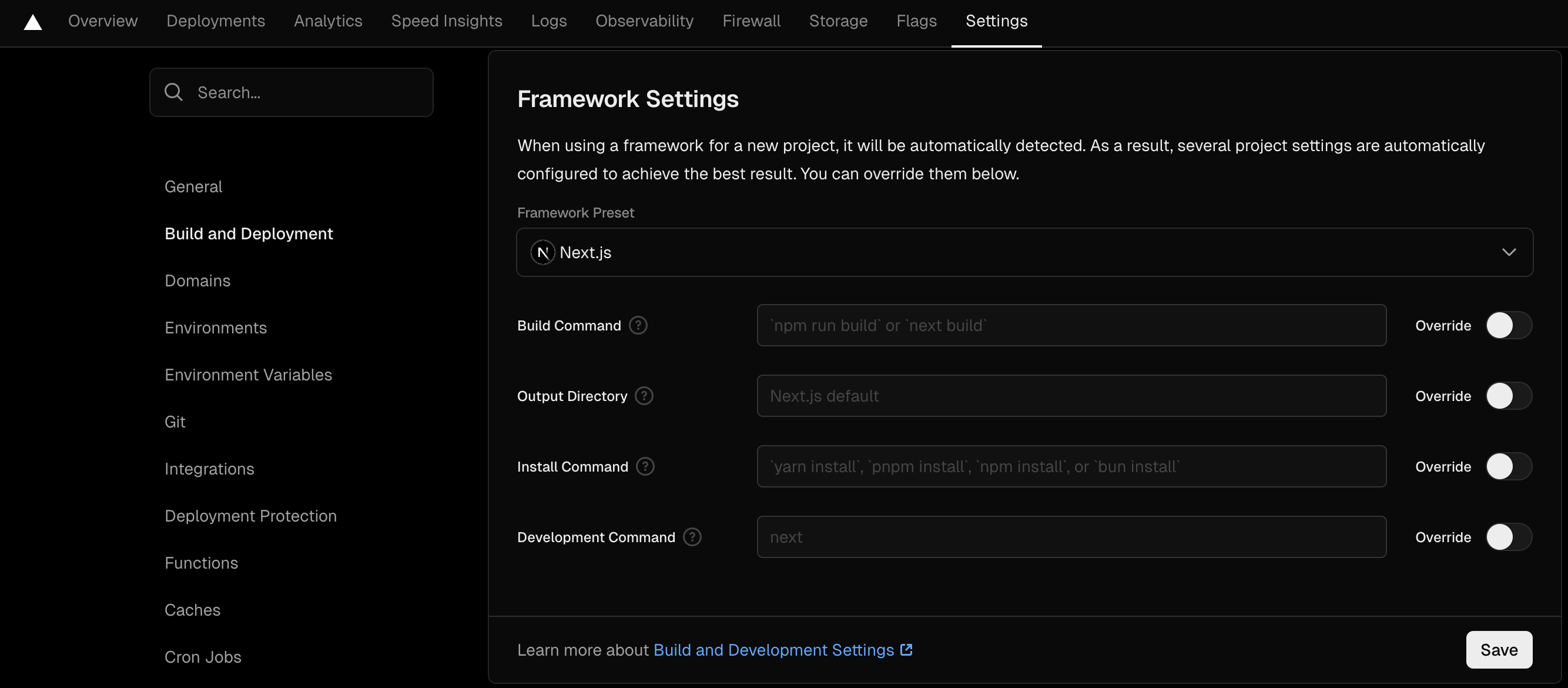



---
## Managing the integration
### Environment variables
The integration sets both modern (`DATABASE_URL`, `DATABASE_URL_UNPOOLED`) and legacy PostgreSQL variables (`POSTGRES_URL`, `PGHOST`, etc.) for Production and Development environments. Preview variables are injected dynamically per deployment.
- `DATABASE_URL`: Pooled connection (recommended for most applications)
- `DATABASE_URL_UNPOOLED`: Direct connection (for tools requiring direct database access)
**To customize which variables are used:**
1. Go to **Neon Console → Integrations → Manage → Settings**
2. Select the variables you want (e.g., `PGHOST`, `PGUSER`, etc.)
3. Click **Save changes**
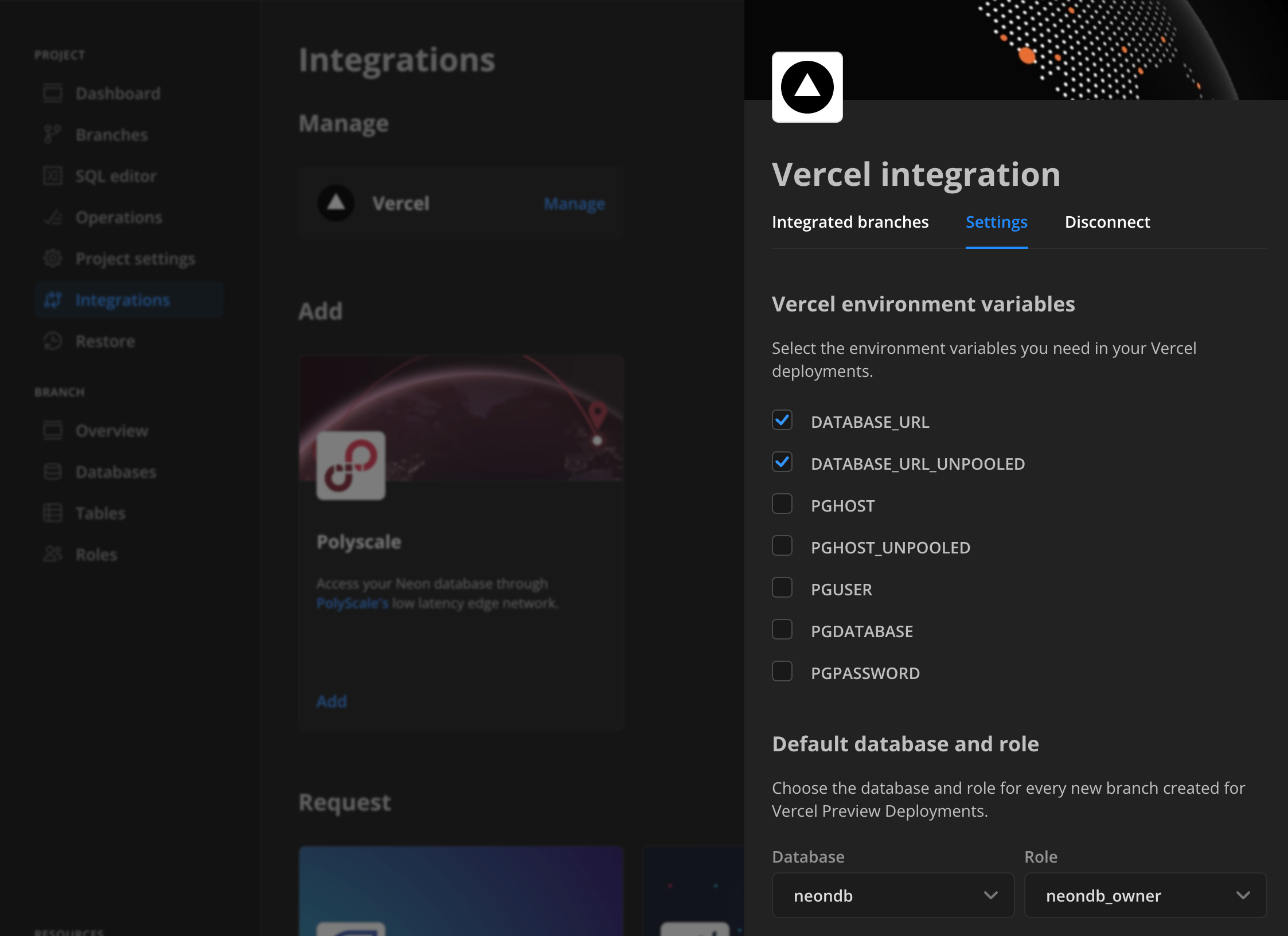
### Branch cleanup
**Automatic cleanup (recommended):**
Enable **Automatically delete obsolete Neon branches** during setup to remove preview branches automatically when the corresponding Git branch is deleted.
This Git-branch-based cleanup differs from the [Vercel-Managed Integration](/docs/guides/vercel-managed-integration), which deletes branches when deployments are deleted (either manually or automatically via Vercel's retention policies).
**Manual cleanup:**
If needed, you can delete branches manually:
- **Individual branches:** Neon Console → Integrations → Manage → Branches → trash icon
- **Bulk delete:** Use **Delete all** in the same interface
- **API/CLI:** Use Neon CLI or API for programmatic cleanup
- **Don't rename branches:** Renaming either the Git branch or Neon branch breaks name-matching logic and may cause unintended deletions
- **Avoid child branches:** Creating child branches on preview branches prevents automatic deletion
- **Role dependency:** The integration depends on the selected role - removing it will break the integration
### Disconnect integration
To disconnect the integration: **Neon Console → Integrations → Manage → Disconnect**. This stops creating new preview branches but doesn't remove existing branches or the integration from Vercel.
---
## Limitations
- **One-to-one relationship:** Each Neon project connects to exactly one Vercel project
- **Integration exclusivity:** Cannot coexist with the Vercel-Managed Integration in the same Vercel project
- **Role dependency:** Integration requires the selected PostgreSQL role to remain active
---
## Next steps
Create a feature branch and push changes to verify preview deployments work correctly
Add migration commands to Vercel's build settings if using an ORM like Prisma
Enable automatic cleanup or establish a manual cleanup process
Review and adjust which database variables are injected into your deployments
---
## Troubleshooting
### Environment variable conflicts
If you see "Failed to set environment variables" during setup, remove conflicting variables in Vercel first:
1. Go to **Vercel → Settings → Environment Variables**
2. Remove or rename existing `DATABASE_URL`, `PGHOST`, `PGUSER`, `PGDATABASE`, or `PGPASSWORD` variables
3. Retry the integration setup
### Integration stops working
**Issue:** Preview branches no longer created
**Cause:** The PostgreSQL role selected during setup was deleted
**Solution:** Reinstall the integration with a valid role, or change the role in **Neon Console → Integrations → Manage → Settings**